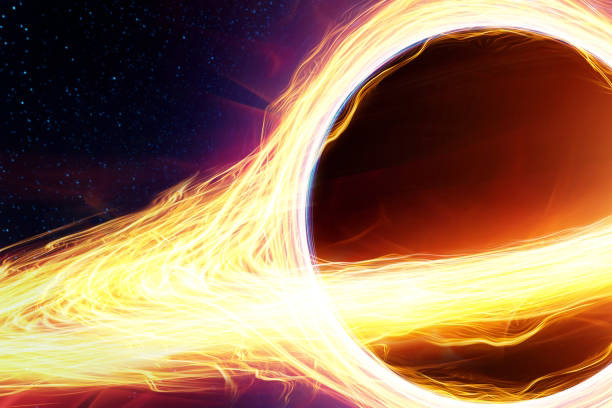Recently, astronomers have observed a "Death Star" black hole that is firing powerful beams at nearly the speed of light. Remarkably, it's also changing the direction of its jets, much like the fictional 'Death Star' in Star Wars. These powerful jets are produced by the accretion disk around the black hole. When particles fall into this disk, the black hole expels some of them at nearly the speed of light.
NASA observed these supermassive black hole beams using the advanced X-ray telescope, Chandra. This observation has determined that the speed of these beams is nearly equal to the speed of light. The shifting jets of this black hole enhance our understanding because it's a very rare phenomenon. This behavior suggests a complex interaction of the black hole's magnetic field with its environment.
While many black holes emit jets, this "Death Star" black hole is unique because it can change the direction of its jets. This behavior sets it apart from typical black holes, whose jets are usually stable and align with their rotational axis. The powerful jets from "Death Star" black holes can have significant effects on their surroundings. They can heat up the interstellar medium, inhibit star formation in their host galaxies, and potentially strip gas from nearby galaxies, influencing their evolution.
Some well-known examples include the black holes in the centers of active galaxies like M87 and Centaurus A, where dynamic jets have been observed. These black holes provide key case studies for understanding jet reorientation. Now, let's dive deep into the formation of different types of black holes to gain a deeper understanding of these exceptional phenomena.
Formation of Normal Black Holes:
A normal black hole forms when a massive star reaches the end of its life cycle and undergoes gravitational collapse. Here are the complete steps:
1. Stellar Evolution: A star spends most of its life fusing hydrogen into helium. When the hydrogen runs out, the core contracts and heats up, causing the outer layers to expand.
2. Red Giant/Supergiant State: The star becomes a red giant or supergiant as the core fuses heavier elements.
3. Supernova Explosion: When the iron fusion core becomes unsustainable, it collapses under its own gravity, resulting in a supernova explosion.
4. Black Hole Formation: If the remnant core is massive enough (usually three times the mass of the sun), it collapses into a singularity, forming a black hole.
Formation of Supermassive Black Holes (SMBHs):
Supermassive black holes (SMBHs) are found at the centers of most galaxies, including our Milky Way. They are millions to billions of times the mass of the Sun. Their formation is less understood but theories include:
1. Direct Collapse: Large clouds of gas collapse directly into a black hole without forming stars first.
2. Hierarchical Merging: Small black holes merge over time to form larger ones.
3. Accretion: SMBHs grow by accreting gas, dust, and stars over billions of years.
Supermassive Black Holes with Jets:
These SMBHs emit powerful jets of high-energy particles that extend far into space. These jets are produced when material falling into the black hole is accelerated along magnetic field lines at the poles, producing relativistic jets. The "Death Star" black holes are a special type of SMBHs with dynamic jets capable of changing direction and targeting different celestial objects.
Differences Between Normal SMBHs and "Death Star" SMBHs:
- Normal SMBHs: Formed through direct collapse, hierarchical merging, or accretion over time.
- “Death Star" SMBHs: Likely share similar formation processes but have additional mechanisms that allow for the reorientation of their jets.
The exact cause of this dynamic behavior is still under study, but it might be related to interactions with surrounding material or magnetic fields in the galaxy.
Understanding these unique black holes not only deepens our knowledge of cosmic phenomena but also enhances our grasp of the universe's complexities and the extraordinary mechanisms at play.















0 Comments